Advertisements
Advertisements
प्रश्न
Collect information about the personalities who greatly contributed to the formation of Maharashtra and prepare a project based on it with the help of your teachers.
उत्तर
Samyukta Maharashtra Parishad was the organization that collectively struggled for the creation of the Maharashtra state as a distinct Marathi-speaking state out of the State of Bombay with Bombay as its capital. It was created in opposition to the recommendation of creating a bilingual state for Gujarat and Maharashtra by the State Reorganization Committee. It caused widespread agitation and resulted in the creation of the Samyukta Maharashtra Samithi on 6 February 1956.
The organization was founded on 6 February 1956 in Pune under the leadership of Keshavarao Jedhe. Many of the prominent activists of Samyukta Maharashtra Samiti were leftists, such as Shreedhar Mahadev Joshi, Shripad Amrit Dange, Narayan Ganesh Gore, and Uddhavrao Patil. Other leaders included Maina Gawankar, Walchand Kothari, Prahlad Keshav Atre, Keshav Sitaram Thackeray, Pandurang Mahadev Bapat, Bhausaheb Raut, P. K. Atre, and Amar Shaikh.
- Keshavrao Jedhe:
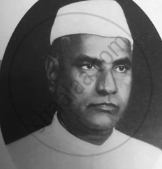
Keshavrao Marutrao Jedhe was a prominent freedom fighter and Congress leader from Pune. He was the chairman and president of the Samyukta Maharashtra Samiti. This organization collectively struggled for the creation of Maharashtra state as a distinct Marathi-speaking state out of the State of Bombay with Bombay as its capital.
In the second general election, the Samiti defeated the Congress by securing 101 seats out of 133. The Congress could form a government only with the support of Gujarat, Marathwada, and Vidarbha. Yashwantrao Chavan became the first Chief Minister of the bilingual Bombay State.
Keshavarao Jedhe struggled persistently for the movement, even by sacrificing the lives of several people and finally succeeded in convincing the Congress leaders that Maharashtra should have a separate state. On 1 May 1960, the state of Maharashtra, which included western Maharashtra, Vidarbha, and Marathwada, was formed.
- Shreedhar Mahadev Joshi:
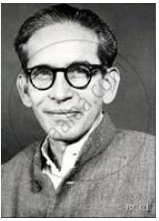
Shreedhar Mahadev Joshi, also known as S.M. Joshi, was an important leader of the Samyukta Maharashtra Samiti, the organization that collectively struggled for the creation of Maharashtra state as a distinct Marathi-speaking state out of the State of Bombay with Bombay as its capital.
He was the secretary of the Maharashtra Youth Conference and the Mass-Contact Committee. He played a key role in the success of the movement. He was a member of the All-India Congress Socialist Party. He was also working to uplift the Dalits in Maharashtra.
- Shripad Amrit Dange:
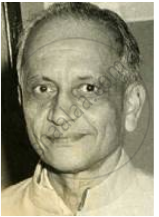
Shripad Amrit Dange was a founding member of the Communist Party of India (CPI) and a stalwart of the Indian trade union movement. He also played an active role in forming a separate state of Maharashtra.
Samyukta Maharashtra Samiti was the organization that collectively struggled for the creation of Maharashtra state as a distinct Marathi-speaking state out of the State of Bombay with Bombay as its capital. In the second general election, the Samiti defeated the Congress by securing 101 seats out of 133. Dange was elected to the Lok Sabha in 1957 from Bombay City Constituency of the State of Bombay.
Dange, S M Joshi, N G Gora, and P K Atre fought persistently in the Samyukta Maharashtra movement. Finally, on 1 May 1960, the state of Maharashtra, which included western Maharashtra, Vidarbha, and Marathwada, was formed.
- Prahlad Keshav Atre:
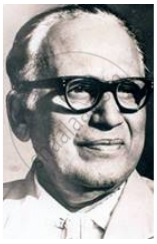
Prahlad Keshav Atre, popularly known as Acharya Atre, was a prominent Marathi writer, newspaper founder-editor of the newspaper Maratha and political leader of the Samyukta Maharashtra movement.
As part of the movement, P K Atre used his Maratha newspaper to criticize Nehru, Morarji Desai, and S K Patil. The Marathi press spearheaded this movement and intensified its influence among the Maharashtrian populace. The Marathi newspaper played an important role in unifying the people for the demands of the Samyukta Maharashtra Movement.
- Prabodhankar Thackeray:
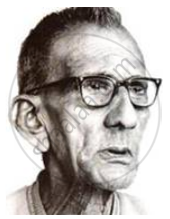
Keshav Sitaram Thackeray, generally known by his pen name Prabodhankar Thackeray, was one of the key leaders of the Samyukta Maharashtra movement, which successfully campaigned for the linguistic state of Maharashtra.
He joined the movement in 1951, demanding the integration of the Dang district in Maharashtra instead of Gujarat state. The movement finally convinced the Congress leaders that Maharashtra should have a separate state. On 1 May 1960, the state of Maharashtra, which included western Maharashtra, Vidarbha, and Marathwada, was formed.
संबंधित प्रश्न
The State of ______ was formed on 1 May 1960.
______ put forth the proposal of Samyukta Maharashtra with Mumbai in the Mumbai Municipal Corporation.
______ accepted the responsibility as first Chief Minister of Maharashtra.
Explain the following statement with a reason.
Samyukta Maharashtra Samiti came to be established.
Explain the following statement with a reason.
The role of newspapers was important in Samyukta Maharashta Movement.
Write a short note.
Samyukta Maharashtra Parishad
Write a short note.
Contribution of Samyukta Maharashtra Samiti.
